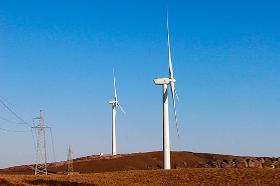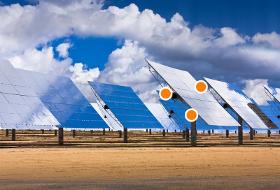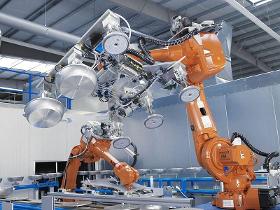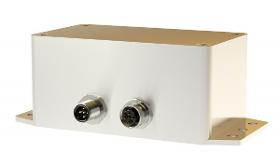- europages
- >
- COMPANIES - SUPPLIERS - SERVICE PROVIDERS
- >
- wind power
Results for
Wind power - Import export

NOVELIS DEUTSCHLAND GMBH OHLER® - FLEXROHRE
Germany
The key to successful power generation through wind is efficiency, and industrial aluminum is playing a key role in making wind turbines lighter. Working together with our partners, we’ve created a smaller, lighter tower casing behind the rotor blades, as well as an innovative aluminum enclosure for the turbine’s generator that is lighter and more efficient than fiberglass composite housings used previously. This housing reduces fire risk thanks to aluminum’s incombustibility and helps cool the generator due to aluminum’s thermal conductivity, extending the aluminum enclosure’s functional life. It also maximizes the unit’s recyclability and protects the generator from lightning, since the aluminum acts as a Faraday cage and is non-combustible in the event of a lightning strike.
Request for a quote
WESTFÄLISCHE DRAHTINDUSTRIE GMBH
Germany
Overhead and underground conductors in various designs and constructions for the construction of new lines, the repair of existing transmission grids, the connection of transformer substations, solar and wind power plants. Furthermore, the upgrading of existing lines with high-temperature conductors to increase transmission capacity.
Request for a quote
MICROCONTROL GMBH & CO. KG - SYSTEMHAUS FÜR AUTOMATISIERUNG
Germany
Solar power plants, wind parks and combined heat and power systems have established in energy generating technology. To achieve a high operating reliability, MicroControl solutions ensure perfect system control and precise transfer of measurement data. As for example in the adjustment of solar panels, in temperature measurement in block-type thermal power plants or in torsion measurement in wind power stations.
Request for a quote
RIPPERT ANLAGENTECHNIK GMBH & CO. KG
Germany
Solutions for the transport and handling of parts. The question of how surface coating plants can be optimally integrated into a production environment arises with ever increasing frequency. Rippert offers its customer an ‘everything from one source solution’ here. The company’s own engineers develop coordinated solutions for the transport and handling of parts together with the customer. Simulation is thereby often the right tool for recognising the full potential of these possibilities. From frying pans to heavy workpieces from the wind power sector, Rippert has already ‘taken it all in hand’. We work on concepts in which industrial robots substitute or supplement the classic conveying equipment in coating plants. For handling tasks we often see the necessity for systems that work adaptively; this means that, for example, image processing systems must recognise the accurate position of parts in two and even three-dimensions so that a robot can pick up inaccurately positioned parts.
Request for a quote
GORACON SYSTEMTECHNIK GMBH
Germany
Save time when ascending to carry out maintenance and repair work to your turbine. With a Gservicelift you can complete a 100 meters ascent in approx. 5 minutes. Without a Gservicelift on the other hand, the arduous climb requires very much more time and demands a lot of strength. But this is not the only argument which clearly speaks for itself. Heavy tools and loads up to 400 kg can be transported comfortably with a Gservicelift, and all this with automatic transport, which does not take up the costly time of your personnel for the ascent. It is well proven, that wind power plants with an integrated ascent system have a higher level of availability and that the quality of your turbine maintenance will increase enormously.
Request for a quoteDo you sell or make similar products?
Sign up to europages and have your products listed

TWK-ELEKTRONIK GMBH
Germany
The sensor system is intended as a component for use e.g. in wind power plants to measure and evaluate vibrations in the mast head. Registration of dynamic accelerations by means of MEMS sensors (Micro-Electro-Mechanical System) with subsequent digitisation by a controller. The device consists of an acceleration sensor, a controller unit and three types of output interface. The main feature is two safety switching contacts (potential-free), which can be used e.g. in the safety chain to undertake safety shut-off in the event of excessively high acceleration values. Data output is carried out via the CANopen interface. The standard or the safety profile can be selected. There are additionally two analogue outputs 4 ... 20 mA, which can be optionally assigned to two of the three measurement axes. Thanks to its high resistance to vibration and shock, the sensor is suitable for use in areas with rough environmental conditions.
Request for a quote
TWK-ELEKTRONIK GMBH
Germany
The sensor system is intended as a component for use e.g. in wind power plants to measure and evaluate vibrations in the mast head. Registration of dynamic accelerations by means of MEMS sensors (Micro-Electro-Mechanical System) with subsequent digitisation by a controller. The device consists of an acceleration sensors, a controller unit and three types of output interface. Data output is carried out via two analogue interfaces with 4 ... 20 mA plus CANopen and via 4 relay contacts (currently 1 error relay contact). The NVA is parameterised via the CANopen interface. This is not galvanically separated. The sensor is equipped with a filter circuit to protect against fast transients and surge voltages of up to 2 kV in the supply. The protection types are IP 69K (housing) and IP 67 (connector/socket). With its good vibration and shock values, the sensor is suitable for use in areas with rough environmental conditions.
Request for a quoteResults for
Wind power - Import exportNumber of results
8 ProductsCompany type